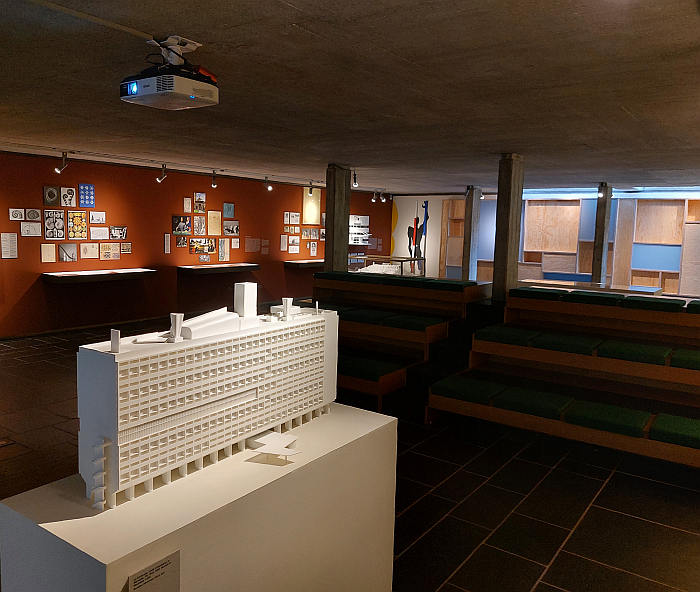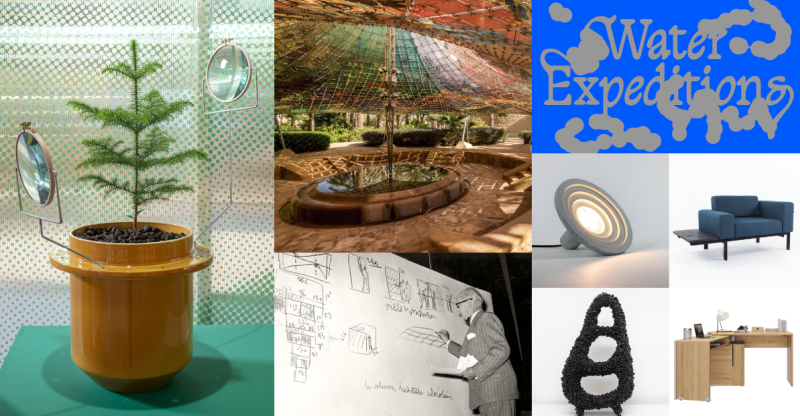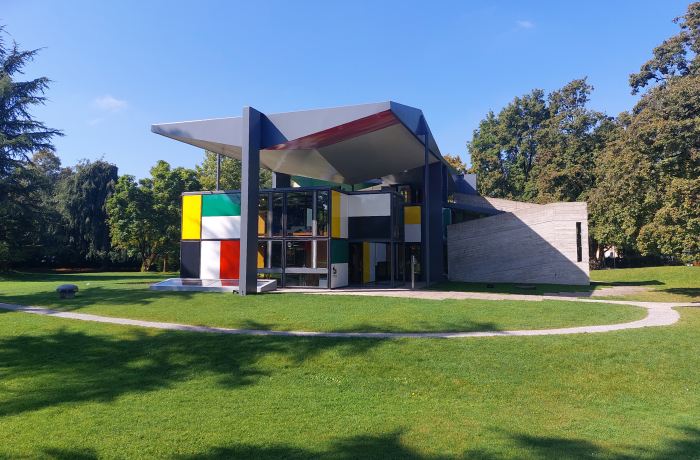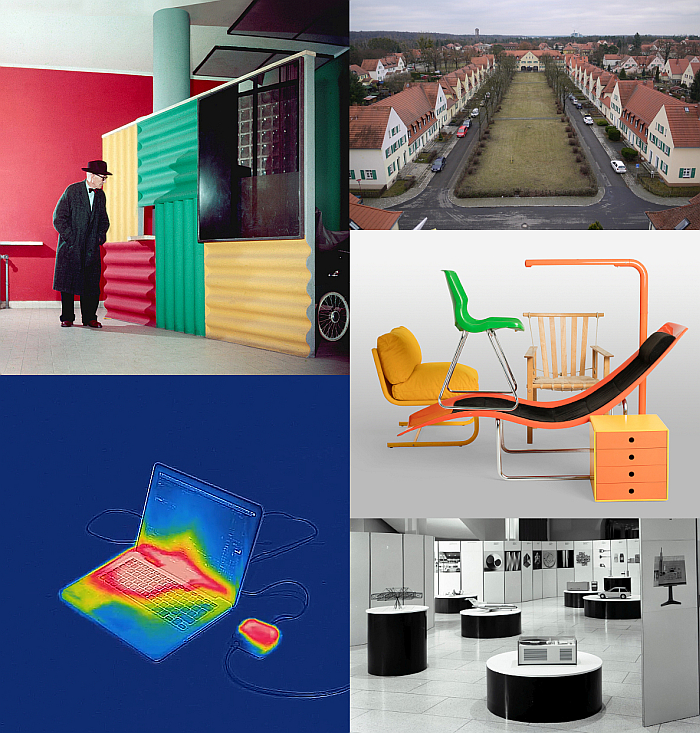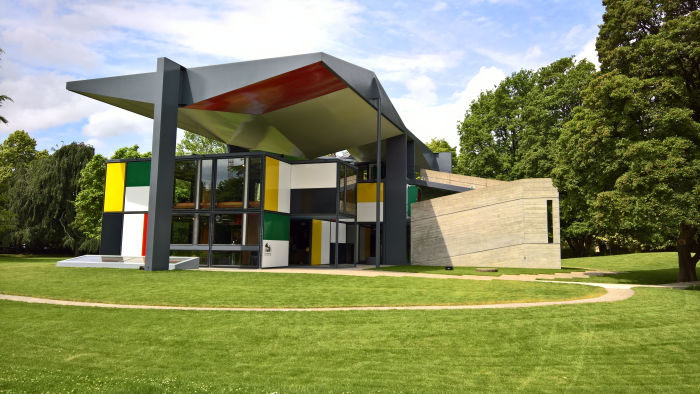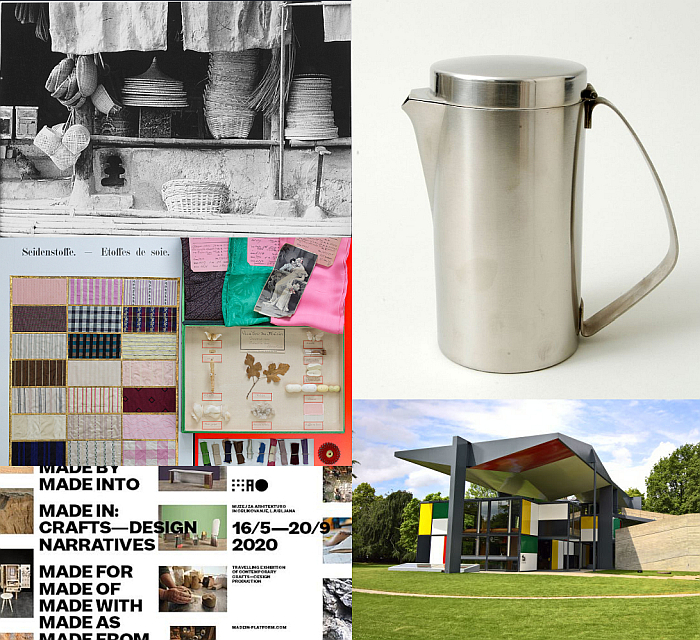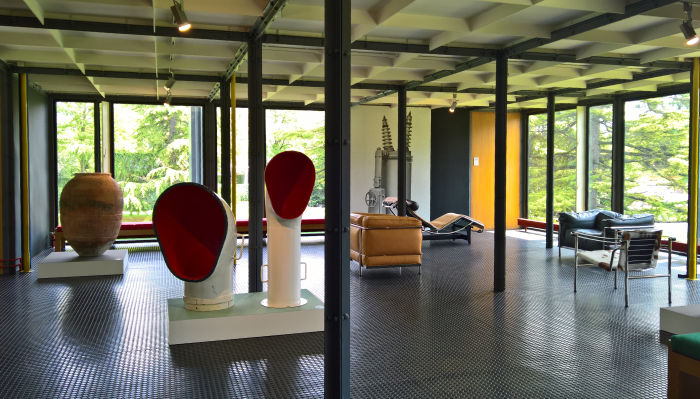The Modulor — Measure and Proportion at Pavillon Le Corbusier, Zürich
“Customs turn into habits, some modest, some all-powerful”, opined Le Corbusier in 1950, a reference to that inexplicable way humans have of passing through life blithely accepting all that has come before, accepting all that existed when they were born, as fixed and immutable and unchallengeable; an acceptance of the familiar, the existing, as fixed and immutable and unchallengeable that, for Le Corbusier, represented a major hindrance to the “free play of the mind”. However, Le Corbusier continues, “a simple decision can sweep away the obstacle, clearing the path for life”.1
A simple decision such as sweeping away the customs turned habits of “the metre or the foot-and-inch” as the basis of measurement and sweeping in a measurement system based on human proportions.
A simple decision that Le Corbusier very much favoured we make.
A simple decision which Le Corbusier made, and for which he developed a scale of proportions, le Modulor.
If a simple decision that as The Modulor — Measure and Proportion at Pavillon Le Corbusier, Zürich, helps elucidate, wasn’t that simple; and one which, while while it didn’t, ¿hasn’t yet? become the ubiquitous construction and planning tool Le Corbusier envisaged, nor has it (¿yet?) cleared any notable paths for the greater majority of us, does allow one to better approach better appreciations of Le Corbusier, his work, his positions and his place in the (hi)story of architecture and design…….
5 New Architecture & Design Exhibitions for April 2023
Although the etymology of “April” is lost in the mists of time, one of the more likely, and more satisfying, theories as to its origins is to be found in the Latin verb aperire, to open, which itself can be considered as being, possibly, related to the ancient Greek ἄνοιξις, ánoixis, opening. And thus the very obvious connotations to spring springing forth in April, to the natural world opening for another season.
What is much better recorded are the new architecture and design exhibitions apertio and ἄνοιξις in April 2023. Springing forth in April 2023.
Our five recommendations from those many new springtime blooms can be found in Zürich, Weil am Rhein, Paris, Hasselt and Dresden…….
Le Corbusier and Color at the Museum für Gestaltung, Pavillon Le Corbusier, Zürich
One could be forgiven for thinking that little would be as pointless as a Le Corbusier colouring-in book.
So singularly achromatic is the popular understanding of Le Corbusier, a lack of colour reinforced by the dour, austere, round bespectacled, persona which so universally defines Le Corbusier: what, one asks oneself, could there possibly be to colour in a Le Corbusier colouring-in book?
Yet in contrast to the popular Le Corbusier image, Le Corbusier’s career was one undertaken in colour. A career accompanied by, informed by, arguably driven by, considerations on and the study of colour.
An (oft overlooked) aspect of his work, of his understandings and approaches, and persona, explored in the exhibition Le Corbusier and Color at the, appropriately kaleidoscopic, Pavillon Le Corbusier, Zürich.
5 New Architecture & Design Exhibitions for May 2021
According to Germanic folklore Mairegen bringt Segen, Rain in May brings blessings.
It also brings an excellent excuse to visit an architecture and/or design exhibition.
Our five recommended shelters from the showers in May 2021 can be found in Ulm, Stockholm, Baruth, Zürich and Hasselt……
Le Corbusier and Zürich at the Museum für Gestaltung, Pavillon Le Corbusier, Zürich
Given the very close connections between Le Corbusier and France, one could be forgiven for, occasionally, forgetting that he was born in Switzerland.
With the exhibition Le Corbusier and Zürich the Museum für Gestaltung allow not only an insight into the Le Corbusier biography as charted by Switzerland’s largest city, but also of his not always easy relationship with the country of his birth.
5 New Architecture & Design Exhibitions for June 2020
We thought long and hard as to if we should continue our online exhibition recommendations series, or go back to offline exhibitions…… and decided for a return to offline.
We fully appreciate that in a lot of countries museums are still closed, as indeed are the international borders that you would normally and naturally criss-cross for a short city break to visit those that are open; however, many museums are open, many more are planned/planning to open in the course of June, and interesting and informative as online presentations can be, viewing an exhibition in a museum is the more satisfying experience, the more rewarding experience, the more enduring experience. And an important experience.
As we oft opine, museums aren’t just about collecting and preserving the past, nor just additions, adornments, to cafés and gift shops; rather they are locations for discourse, contemplation and reflection. Locations in which not only subjects which, in the overhyped, overheated marketplace of contemporary media may never find an audience, can be allowed to tell their story, can in many cases be allowed to reclaim their place in our (hi)story, but locations where subjects can be approached not only from a multitude of perspectives simultaneously, but from new, contradictory and often otherwise unachievable perspectives, and that without prejudice, bias or a commercial necessity to conform to some preconceived narrative.
Admittedly not every exhibition manages that, many do succumb to an egoistic desire to be a “blockbuster” and thus present an accepted, tourist gaze, presentation of their subject; but there is no reason why every exhibition cannot discuss lesser illuminated subjects without fear or favour.
And when museums do such, and do such well, do such with honesty and impartiality, they become locations which invite, encourage and enable you to extrapolate on that which is presented and to carry your thoughts and arguments over into other arenas and areas, and thereby helping us all approach better understandings of ourselves, individually and collectively, and of the world around us, the innate natural and that which human society has created. While also improving our knowledge of the subject at hand. Clarifying that you may not have understood a subject as completely as you believed you did.
And that’s not an experience and opportunity that one should ever undervalue or neglect. And certainly never stop searching for.
While specifically in context of design exhibitions; for all that online exhibitions can and do offer, there is simply no substitute to being in the presence of a physical object, nor can we imagine there ever will be.
And so while all museums remain virtually open 24/7, and we’d encourage each and everyone of you to use museums’ online services as tools and resources; the fact that many are physically open is much more important. And something to be treasured and made use of.
If made use of with appropriate awareness and sensibility at this moment. Therefore, if you feel comfortable visiting a museum, please before doing so (a) check in advance to ensure that it is actually open, short-term changes can occur and (b) familiarise yourself in advance with ticketing, entry, safety, hygiene, etc rules and systems. And during your visit stay safe and responsible. And receptive for new ideas, new opinions, new names, new perspectives, new connections, new understandings……
Mon univers @ Pavillon Le Corbusier, Zürich
“This house is a work by Le Corbusier” announces a yellow and white sign on the edge of the Zürichhorn park, “I commissioned it in his honour, and as a location from which to spread his ideas amongst a wider public”
With the exhibition Mon univers the Pavillon Le Corbusier Zürich attempt to do just that via an exploration of the Swiss architect, artist, designer, author, et al, through a very specific filter: that which he collected.
